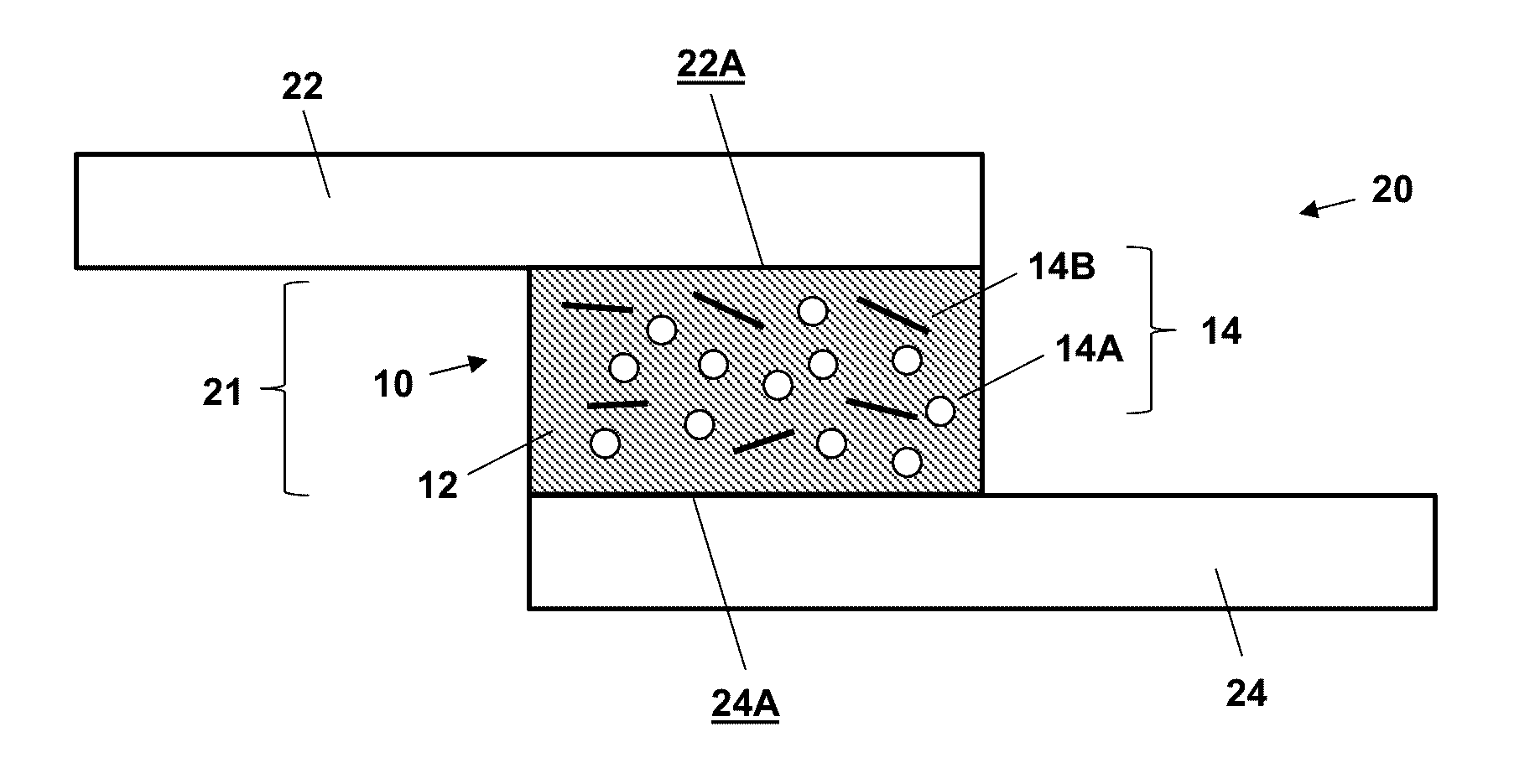Reversible Adhesive Compositions and Related Methods
a composition and adhesive technology, applied in the field of reversed adhesive compositions, can solve the problems of inability to efficiently join metals-to-composites, and inability to adapt to weld materials, etc., and achieve the effect of minimising to negligible chang
- Summary
- Abstract
- Description
- Claims
- Application Information
AI Technical Summary
Benefits of technology
Problems solved by technology
Method used
Image
Examples
example 1
[0066]Joining of materials and components is inevitable as it allows versatility in assembly and repair along with reduction in time and cost of manufacturing. However, joints are mostly considered the ‘weak-links’ of the structure due the complex phenomena and interactions of several elements of either similar or dissimilar materials. These complexities combined with the need for lightweight structures and increased safety requires better understanding and development of robust dissimilar material joints. This example illustrates the use of the disclosed active adhesives, which inherit all the advantages of bonded joints (e.g., being lightweight, elimination of holes and associated stress-concentrations), while overcoming the shortcomings of bonded joints related to disassembly and repair. Additionally, manufacturing flaws and in-service damage such as impact-induced delamination can be repaired through strategic heating of the adhesive without affecting the adherends.
[0067]Thermop...
example 2
[0079]This example illustrates the application of a variable frequency microwave (VFM) for effective bonding and de-bonding of a glass fiber composite by specifically targeting and coupling to the XGNP-reinforced nylon film material (3 wt. % XGNP in polyamide-6 as in Example 1) which is sandwiched between two similar composite specimens, without causing damage or burning of the composites. Six composite specimens, three for bonding and three for de-bonding, were provided for this initial process. The material had a film thickness of about 0.127 mm. The composite / material assembly was about 25.4 mm×100 mm, with an approximate overall thickness of 10.33 mm.
[0080]For bonding, each individual sample was placed inside a MICROCURE2100 VFM cavity on a quartz stand. The MICROCURE2100 VFM apparatus (available from Lambda Technologies, Morrisville, N.C.) provides a variable frequency microwave from 5.8 GHz to 7.0 GHz at 400 W, 700 W power. A fiber optic contact probe was attached to the bond-...
example 3
[0082]This example illustrates an adhesive composition according to the disclosure using selected thermoplastic adhesives and commercially available ferromagnetic nanoparticles (FMNPs) as the electromagnetically excitable particles. The selected ferromagnetic nanoparticles are embedded in thermoplastic adhesives to evaluate their thermal response while they are subjected to external electromagnetic field (using induction heating process). Appropriate ranges of frequency of alternating current (AC), power, and concentration of FMNPs are chosen based on past experience and available literature for the selected adhesive materials in order to provide electromagnetic induction heating. Corresponding factors such as joining techniques, geometries, and repetitive re-assembly parameters are considered as exploration parameters to improve the performance the joints. Furthermore, advanced deformation measurement and damage evaluation techniques such as laser, optical and SEM method are used t...
PUM
| Property | Measurement | Unit |
|---|---|---|
| Temperature | aaaaa | aaaaa |
| Temperature | aaaaa | aaaaa |
| Size | aaaaa | aaaaa |
Abstract
Description
Claims
Application Information
 Login to View More
Login to View More - R&D
- Intellectual Property
- Life Sciences
- Materials
- Tech Scout
- Unparalleled Data Quality
- Higher Quality Content
- 60% Fewer Hallucinations
Browse by: Latest US Patents, China's latest patents, Technical Efficacy Thesaurus, Application Domain, Technology Topic, Popular Technical Reports.
© 2025 PatSnap. All rights reserved.Legal|Privacy policy|Modern Slavery Act Transparency Statement|Sitemap|About US| Contact US: help@patsnap.com



